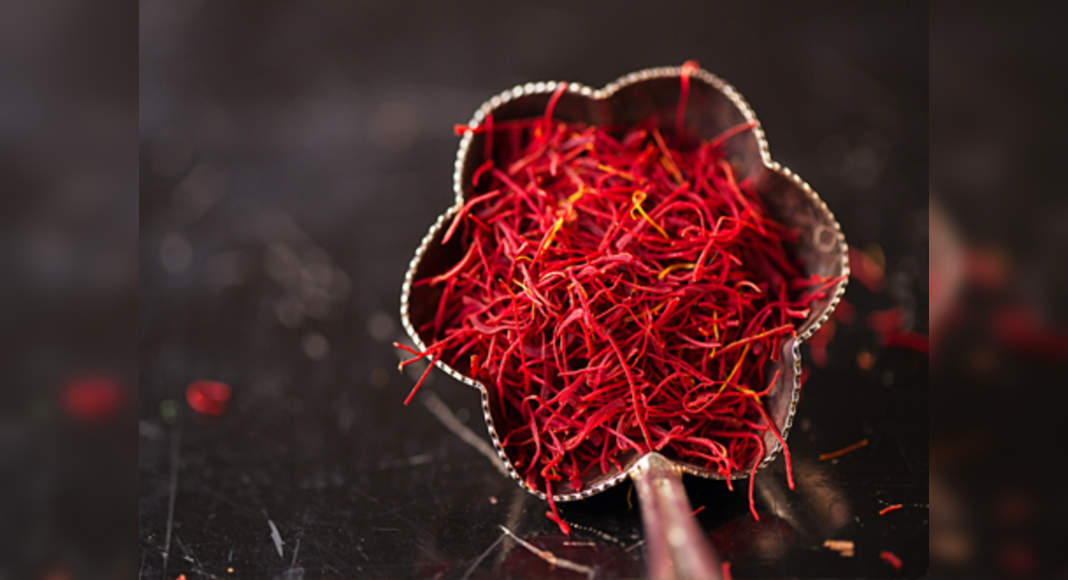
The most expensive spice in the world with extraordinary properties is saffron and is one of the world's spice and medicinal plants that is cultivated in Iran, Egypt, Spain, Italy, Turkey, Switzerland and Pakistan and the Maghreb .Saffron is one of the most important sources of non-oil exports in our country and each year more than 75% of saffron produced in the country is exported abroad including UAE and INDIA and Europe.
What is Saffron?
It is a perennial plant that grows up to 30 cm high. This plant has purple flowers with six petals. Saffron flowers have three flags and a Gynoecium leading to the stigma with three branches in red. The used part of this plant is the end of cream and stigma with three branches, which is known as saffron and has a fragrant color and smell.
It is a plant that has onions and this onion has brown-colored shells.
It is grown in southwestern Asia, southern Spain and southern Europe. The proliferation of saffron is exclusively by the underground gland of pistacia atlantica (corm) or the common onion of zarparan.
It has stem and six purple petals and typically 3 strands (there are more than three strands sometimes) and a red stigma called saffron root.
The used part of saffron plant is its orange stigma, which contains fat, minerals and musilage.
Other name saffron
In the old days, it was called "Hercules Blood" and was used as a protective spell for incense rituals. The saffron cake was baked by the Phoenicians in honor of the fertility goddess Eshtrot and Moon.
In the old days, it was called Zarparan, which gradually became saffron after the Arab invasion of Iran and the import of Arabic into Persian.
History of Saffron
It is One of the most expensive spices in the world and has been used by humans for centuries. Egyptian healers used it to treat gastrointestinal diseases, and in ancient Rome, the plant was used to heal wounds and relieve upper respiratory tract problems.
In the Mediterranean region, this spice was associated with potency, fertility, psychic allergies and sexual power. Adding zarparan to potions and water medicines of love has been a popular ritual and purification among them.
In the Old Testament, in the section of Solomon's sonnets, along with Mer Hijazi, Aloe, Kalamos and Cinnamon, this plant was listed as one of the most valuable and best spices, and this plant was arranged only by women who had a high social rank, such as nuns, who wore saffron-colored clothes.
The Egyptians mixed saffron with honey, and the Romans wanted this plant because they considered it as a sexual instinct tonic and sprayed it on their marriage bed on the night of their marriage.
During its history, this plant was used in body wash compounds as a relaxing, in dry leaf containers, in cosmetics, as an anti-depressant and, of course for coloring and flavoring traditional foods.
Nowadays, it is used as an anti-inflammatory and anti-cancer agent, and its effect on the treatment of cognitive deficits has been investigated. Other uses of saffron in traditional medicine include miscarriage and treatment of spasms, fever, colds, bronchitis and insomnia.
Saffron in Traditional Medicine
This plant was used as a sputum and anti-cough (expectorant), sedative, anti-asthma, adaptogen (adaptive) or menstrual (medication or anything used to accelerate or intensify blood in menstruation) and during the 16th to 19th centuries was used to prepare various drug compounds for pain relief.
What are saffron compounds?
It has many compounds that make this wonderful and valuable plant more famous than ever. Today, the amount of these compounds can be measured through testing in laboratories, and in fact, the higher the quality of these compounds, the more quality of this valuable spice.
Saffron compounds:
Safranal is the cause of scent in this plant.
Picrosine creates a wonderful taste of saffron.
Crocin is a dyeing agent in Zarparan and is also a cancer preventionagent.

What is Saffron Essence
Saffron's scent is due to its colorless tropane essential oil and an oxygenated compound with a safranal. The taste of saffron is related to the bitter heatrosis of picrocrocin. The red color of this plant is related to the presence of a substance called crocin in it.
Where is the origin of saffron
At first, Iran was the world's only exporter of red gold, but in recent years other countries have also entered the business of this plant. In the new era, Spain is considered as a competitor to Iran and is one of the exporters of saffron. The UAE has also become one of the world's major exporters of red gold without cultivating any saffron. In addition, many countries such as Afghanistan, India, etc. They are active in the field of saffron exports.






User comments